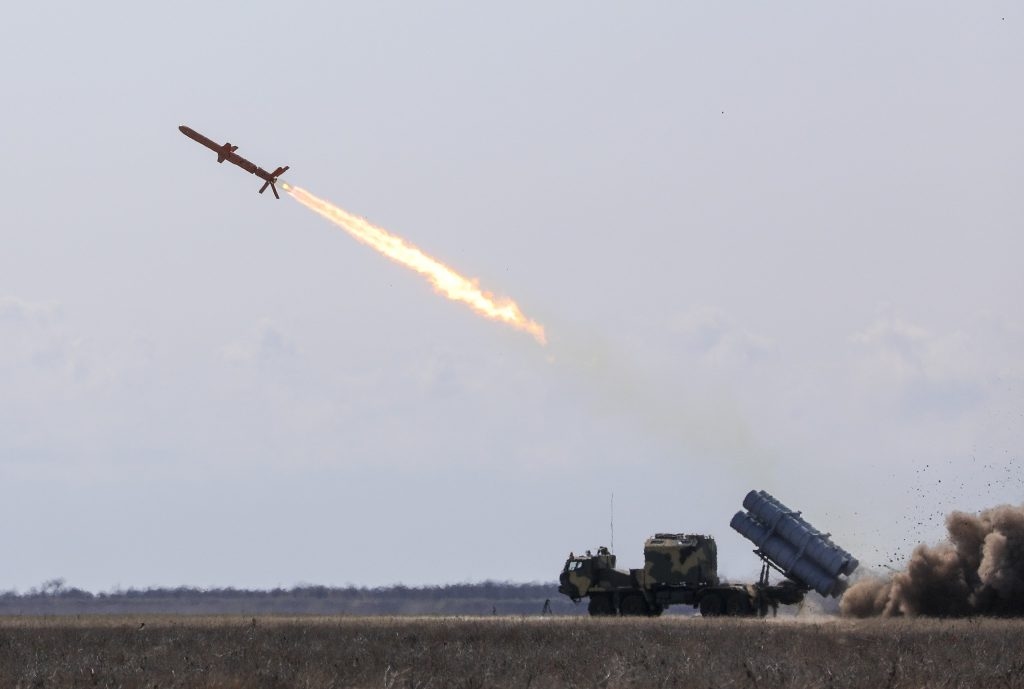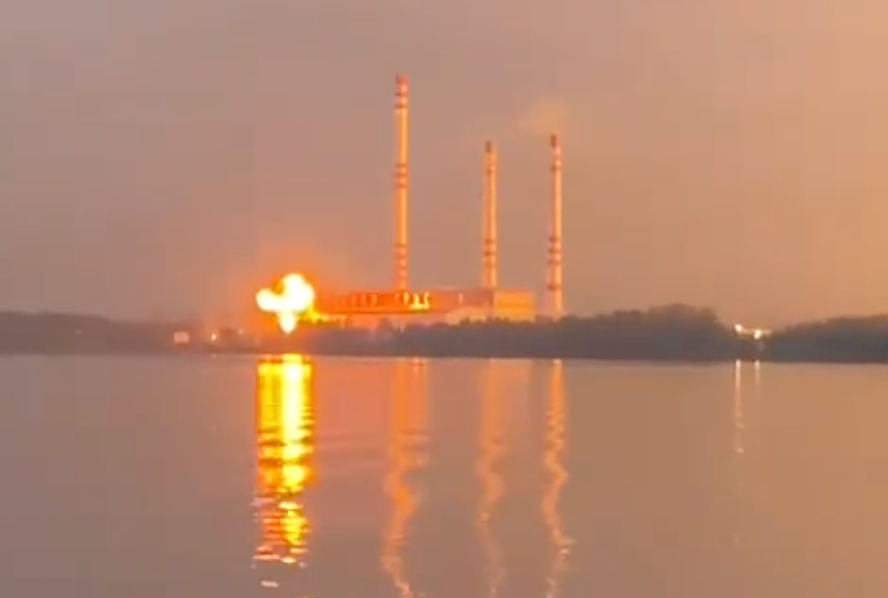Ukraine says it has a new ballistic missile — here's what they do

Speaking at a press conference at the end of August, President Volodymyr Zelensky made a cryptic announcement: Ukraine had carried out a successful test of its first domestic-made ballistic missile.
"It may be too early to talk about it but I want to share it with you," President Volodymyr Zelensky said in reference to the ballistic missile test on Aug. 27 at the Ukraine 2024 Independence Forum in Kyiv.
The president gave no further details about the missile and there is currently no public information on the new missile’s capabilities.
The announcement, along with another just days prior that Ukraine had carried out an attack with its new home-grown missile-drone, the Palianytsia.
As the country’s Western partners continue to restrict Kyiv’s use of their weapons to strike deep into Russian territory over fears of escalation, the announcements show how Ukraine is increasingly turning inward to bolster its fight against Russia’s almost three-year invasion.
How significant is the development of its own ballistic missile for Ukraine and what could it mean for the war?
What is a ballistic missile?
In general, the term "missile" covers a whole range of weapons, from a small, shoulder-launched Javelin designed to take out a single tank, right up to nuclear weapons designed to destroy an entire city.

Regardless of their purpose, they broadly fall under two types — ballistic and cruise.
There are various subtypes based on characteristics including launch-mode missiles that comprise air-to-air, surface-to-air, and sea-to-surface; range missiles like short, medium, intercontinental missiles; propulsion missiles that comprise solid, liquid, and scramjet missiles; and payload missiles, which include conventional, chemical, and nuclear missiles.
Ballistic missiles are rocket-powered and are launched high into the atmosphere before arcing back down onto their target.
They're only guided during the initial stages of launch, so they can be less accurate than cruise missiles, but have the advantage of reaching incredibly high speeds – sometimes more than 3,200 kilometers per hour – as they approach their targets.
Crucially, ballistic missiles also have a very long range – anything from around 1,000 kilometers, up to over 5,000 kilometers.
Russia uses several models, including the Iskander and the Kinzhal. Due to their high speed, only certain air defense systems are capable of shooting them down, the U.S.-made Patriot system being one of them.
Ukraine currently has U.S.-supplied ATACMS ballistic missiles, but is prohibited from being used against targets deep inside Russian territory.

For comparison, cruise missiles are jet-powered missiles that fly at a low altitude, are guided throughout their flight, and can be precisely targeted.
They can change direction during flight, maneuver, and hug the ground, often making them difficult to detect.
This ability to fly low at a low altitude was starkly illustrated last month when fishermen in the Caspian Sea managed to record what appeared to be two Russian cruise missiles headed toward Ukraine.
Reported as the moment of flight of Russian cruise missiles over the Caspian Sea towards Ukraine on July 8th. pic.twitter.com/NdZK3KokFG
— Maria Drutska 🇺🇦 (@maria_drutska) July 10, 2024
They can be launched from aircraft, ships, or ground-based platforms, and use guidance systems such as GPS or ground mapping.
Russia currently uses numerous models, including the Kalibr, the Kh-101, and the Kh-59, all of which were used in Russia's latest mass missile attack on Ukraine earlier this week.
During the terrorist attack today, russia fired at Ukraine at least 127 missiles and 109 drones, according to Zelenskyi. The Air Forces shot down 102 missiles and 99 UAVs, or 201 air targets in total. Our giants! pic.twitter.com/TVZQ1gf6UL
— Olena Halushka (@OlenaHalushka) August 26, 2024
Ukraine has its own Neptune cruise missile, as well as Western-supplied models like the Storm Shadow. Ukraine is also currently prohibited from using the Storm Shadow against targets deep inside Russian territory.
Why does Ukraine want its own ballistic missile?
It's no secret that Ukraine wants to strike targets deep inside Russia, particularly the Russian airfields from which bombers take off and launch missiles at cities across Ukraine.
Ukraine has managed to strike deep and far into Russia with drones, launching its widest-reaching attack across Russian territory on Sept. 1.
But as experts have previously noted to the Kyiv Independent, slow-moving drones are nothing compared to high-speed missiles in inflicting the damage necessary to slow down the Kremlin’s war machine and turn the tide of the war.
Zelensky’s announcement about the ballistic missile came just a few days after Ukraine released the first images of its new Palianytsia missile drone, designed to strike Russian military airfields and "destroy the enemy's offensive potential."

The first successful use of the Palianytsia was confirmed by Zelensky during his Independence Day speech on Aug. 24, and a new video posted on his social media on Aug. 25 provided further details of the project.
The video begins by highlighting that Russia has launched "43,000 types of various missiles and glide bombs at Ukraine" during the full-scale war, from airfields located deep within Russian territory.
"One of the most effective ways to counter this is to strike at the carriers of these weapons – Russian aircraft at military airfields," it adds.
In the two and a half years of full-scale war, Russia has launched about 10,000 missiles of various types and more than 33,000 glide bombs at Ukraine. Stopping attacks on our cities can be achieved by targeting the carriers of this weaponry—Russian aircraft stationer at military… pic.twitter.com/mzisamRWd8
— Volodymyr Zelenskyy / Володимир Зеленський (@ZelenskyyUa) August 25, 2024
Ballistic missiles would be even more useful, though, as they have a longer range and are capable of carrying a more powerful warhead — perfect for taking out Russian aircraft at Russian airfields deep inside Russia.
As practically nothing is known about Ukraine's new ballistic missile, all the public has to go on so far is what Zelensky said at the press conference on Aug. 27.
"What developments does Ukraine have? Well, I thought it’s too early to speak about it but the first Ukrainian ballistic missile has been successfully tested, he said.
"I congratulate our defense industrial base on this."
One thing is known — Ukraine has been developing a ballistic missile for a number of years now, the Hrim-2. While nothing has been confirmed, there has been speculation that this was the ballistic missile test Zelensky was referring to.












